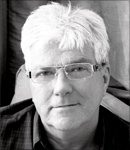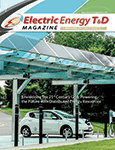 Well another year has come and gone and with it the annual DistribuTECH Conference and Exposition. It also meant travelling to San Diego aboard my least favourite airline. I can’t believe an Airbus 320 could hold so many people although I was a bit suspicious when I saw a crowbar at the end of each row and the rope ladders were neatly coiled by the doors. Five hours with my knees up under my chin in the econo economy section was just about as much as I could take. I’m glad San Diego is such a fabulous city making my misery melt away very quickly.
Well another year has come and gone and with it the annual DistribuTECH Conference and Exposition. It also meant travelling to San Diego aboard my least favourite airline. I can’t believe an Airbus 320 could hold so many people although I was a bit suspicious when I saw a crowbar at the end of each row and the rope ladders were neatly coiled by the doors. Five hours with my knees up under my chin in the econo economy section was just about as much as I could take. I’m glad San Diego is such a fabulous city making my misery melt away very quickly.
I always like riding in the Toyota Prius hybrid taxis. I was totally impressed by the quality and performance of the vehicles and was amused when I saw on the dashboard readout that the car at one point was averaging 100 miles per gallon. Many of my colleagues, including myself, were also lusting after the new Tesla and other performance EVs of which we saw a good many on the streets.
Some years ago, the White House stated that cars running on hydrogen, the universe’s most abundant element, would be a popular form of transport. That optimism changed under Steven Chu, the Nobel Prize-winning physicist who was President Obama’s first secretary of energy. “We asked ourselves, ‘Is it likely in the next 10, 15 or 20 years that we will convert to a hydrogen-car economy?’” Dr. Chu said then, “The answer, we felt, was no.”
Rather than hydrogen, a lot of attention was being apportioned to battery electric vehicles, particularly those made by Tesla Motors.
DistribuTECH 2017 was awesome. Apparently a record-breaker for attendance. There are always ‘themes’ that resound about the place every year and 2017 was no different. A few years ago it was Big Data and Little Data; last year was Microgrids, distributed energy resources (DER) and distributed energy resource management systems (DERMS) and this year is the Internet of Things (IoT). Microgrids, DER and DERMS were still hot-button topics.
A microgrid is a localized grouping of distributed energy resources and loads (such as distributed generators, storage devices, or controllable loads) that normally operates connected to and synchronous with the traditional centralized grid (Macrogrid). It can also disconnect and function autonomously as physical and/or economic conditions dictate.
IoT is increasingly on the lips of conversations in the workplace and outside of it. It’s a concept that has the potential to impact how we live and how we work. What is the ‘Internet of Things’ and how is it likely going to impact us, if at all?
Let’s start with understanding a few things.
Broadband Internet is seeing real growth and availability. The cost of connecting is falling, more devices are being created with Wi-Fi capabilities with on board sensors, technology costs are going down, and smartphone penetration is occurring at blistering speeds. All of these things are creating a ‘perfect storm’ for IoT.
So, what is the Internet of Things?
Stated simply, this is the concept of basically connecting any device with an ‘on’ and ‘off’ switch to the Internet (and/or to each other). This includes everything from cellphones, washing machines, headphones, lamps, coffee makers, wearable devices and so on. This also applies to components of machines. For example, a jet engine of an airplane or the drill found on an oil rig. Analysts claim that by 2020 there will be over 26 billion connected devices. The IoT is a giant network of connected ‘things’ (which also includes people). The relationship will be between people-people, people-things, and things-things.
Why would anyone want so many connected devices talking to each other?
Examples of what this might look like could include:
- Perhaps you are on your way to a meeting; your car could have access to your calendar and already knows the best route to take.
- If traffic is heavy your car might send a text to the other party notifying them that you will be late.
- Your alarm clock wakes you at 6 am and then notifies your coffee maker to start brewing.
- If your office equipment knew when it was running low on supplies and automatically re-ordered more.
On a larger scale, the IoT can be applied to things like transportation networks: ‘smart cities’ which can help us reduce waste and improve efficiency for energy use. This would help us understand and improve how we work and live.
In fact, the IoT allows for virtually endless opportunities and connections, many of which we can’t even think of or even fully understand the impact going forward. It opens the door to a lot of opportunities but also to many challenges.
Security is a huge topic that is often discussed. With billions of devices being connected together, what can be done to make sure their information stays secure. Will someone be able to hack into your toaster and gain access to your entire network? It’s no secret the IoT opens up companies all over the world to more security threats. This is exacerbated by the issue of privacy and data sharing. This is really a heated topic so one can only imagine how the conversations and concerns grow when numbers escalate into the many billions of connections. On top of this, many companies specifically are going to be faced with the massive amounts of data that all of these devices are going to generate. Companies need to figure out a way to store, track, analyze, and make sense of the vast amounts of data that will be produced,
For now the best thing we can do is educate ourselves about what the IoT is and the potential impacts that can be seen on how we work and live.1
1 Jacob Morgan – Keynote speaker, author and futurist







